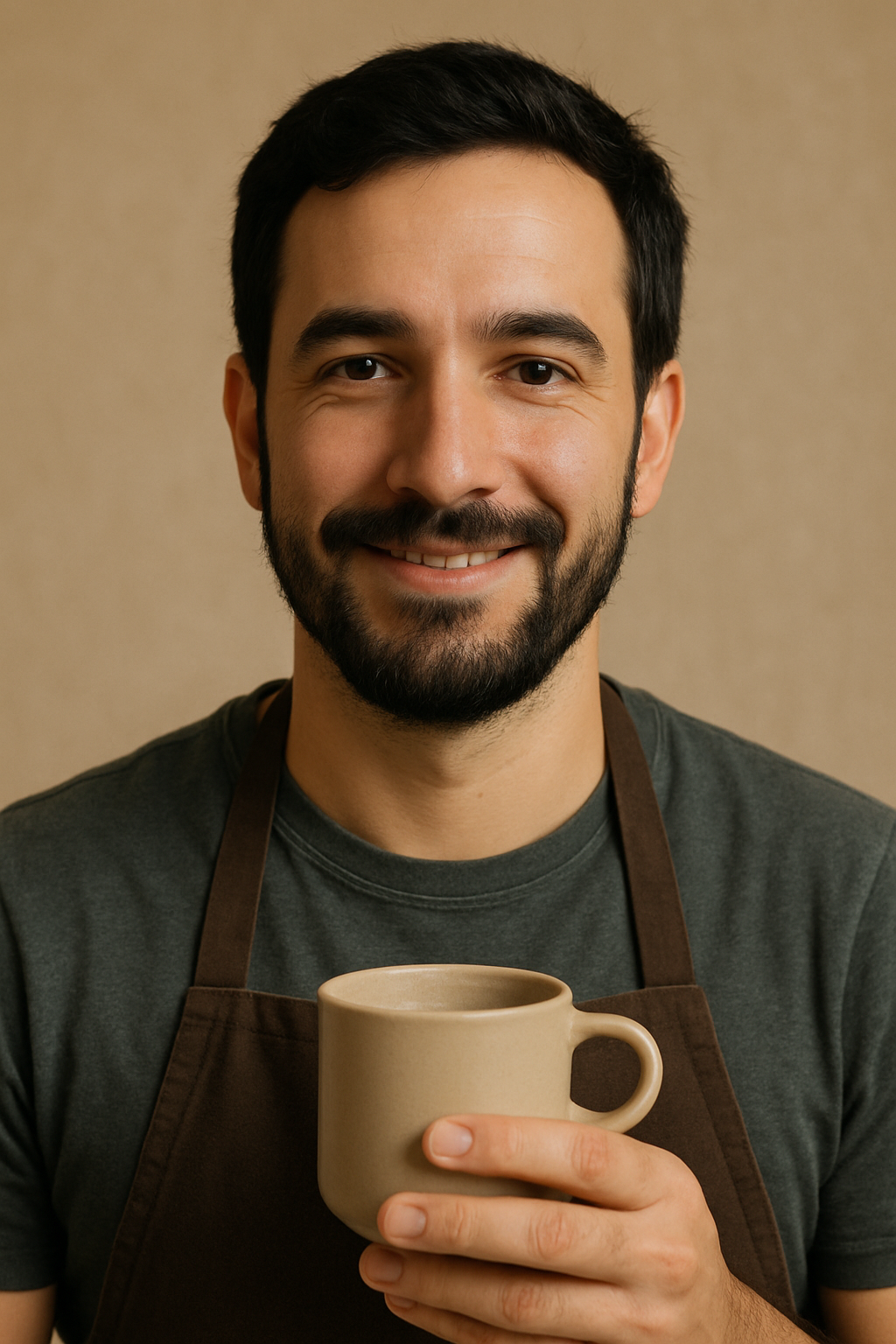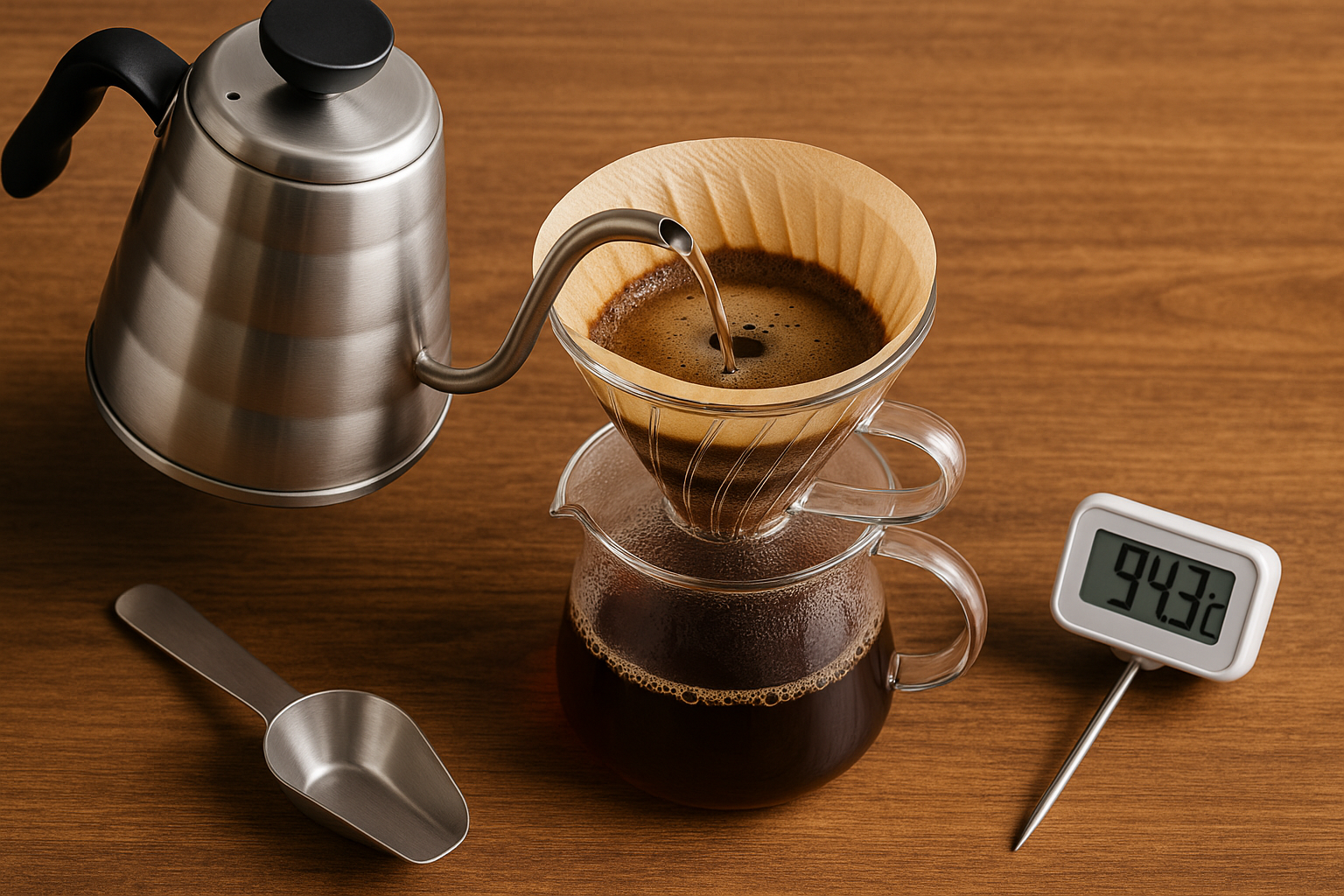Achieving the perfect cup of coffee hinges on more than just quality beans and precise grind size—water temperature plays an equally pivotal role.
Too cool, and your extraction will be weak, sour, and underdeveloped; too hot, and bitterness and harsh flavors dominate.
This guide explores why temperature matters, how it interacts with extraction chemistry, and which exact temperatures to target for a variety of popular brewing methods. By the end, you’ll feel confident dialing in your kettle for consistently delicious results.
Why Water Temperature Matters
Water temperature governs how quickly and thoroughly coffee solubles dissolve. Key chemical compounds extracted include:
- Acids and Aromatics: These are highly soluble and dissolve early at lower temperatures (≈85–90 °C), producing bright, vibrant notes.
- Sugars: Mid-range solubility, requiring moderate temperatures (≈90–94 °C) to deliver sweetness and body.
- Bitter Compounds and Tannins: Least soluble, they only dissolve significantly at higher temperatures (>94 °C), risking over-extraction and unpleasant bitterness.
By controlling temperature, you can emphasize or suppress these flavor groups:
- Lower Range (85–90 °C): Enhances acidity and floral aromatics; ideal for light roasts and delicate origins.
- Middle Range (90–94 °C): Balances acidity, sweetness, and body; works well for most medium roasts.
- Higher Range (94–98 °C): Extracts more sugars and oils, yielding a fuller body; better suited to darker roasts, but risks bitterness.
The Science Behind Temperature and Extraction
Solubility Curves and Extraction Rate
Coffee extraction follows temperature-dependent solubility curves. As temperature rises, solubility of compounds increases exponentially, speeding extraction. A simplified view:
- Acids and Fragile Aromatics: High solubility at lower temps—dissolve quickly, imparting brightness.
- Sugars and Lipids: Require mid-range heat to fully dissolve, building body and sweetness.
- Tannins and Bitter Alkaloids: Only significantly extracted at near-boiling temperatures, often after 95 °C, which can create harshness if overextracted.
Understanding this allows you to match temperature to roast profile and desired flavor balance.
Temperature’s Impact on Brew Time
Higher temperatures accelerate extraction, meaning you may need to shorten brew time to avoid over-extraction. Conversely, if brewing at lower temperatures, extend contact time slightly to achieve balanced extraction. Keep other variables (grind size, dose, agitation) consistent when experimenting with temperature.
Heat Loss Considerations
- Equipment Heat Retention: Metal kettles and stainless-steel drippers retain heat better than plastic. Glass or ceramic drippers lose heat faster, potentially dropping 5–10 °C during brewing.
- Preheating: Rinse drippers, carafes, and server with hot water to stabilize temperature.
- Ambient Conditions: Cold rooms or windy environments cool equipment more quickly; compensate by starting with slightly hotter water.
Optimal Temperature Ranges by Brewing Method
| Brewing Method | Temperature Range | Notes |
|---|---|---|
| Espresso | 90–96 °C | Pressure extraction shortens contact time; higher temp can boost sweetness and body. |
| AeroPress | 85–93 °C | Lower temps (85–88 °C) highlight brightness; higher (90–93 °C) deepen body and sweetness. |
| Pour-Over (V60) | 92–96 °C | Standard 94 °C delivers balanced cup; adjust ±2 °C for roast level and clarity preferences. |
| Chemex | 94–98 °C | High mass glass shares heat; start near boiling (98 °C) to maintain temp through brew. |
| Kalita Wave | 90–94 °C | Triple-wall filter retains heat; 92 °C maintains clarity and sweetness. |
| French Press | 90–96 °C | Longer steep times extract more bitterness; lean toward lower end (90–92 °C). |
| Cold Brew | Room Temp–Cold | Extraction occurs over 12–24 h; temperature less critical but slightly warmer speeds brew. |
Espresso (Pressure Extraction)
- Recommended: 92–96 °C
- Why: Pressure systems compensate for lower temperature extraction, making shots bright without underdevelopment.
- Tip: Dial in on the lower end (90–92 °C) for lighter roasts to preserve delicate notes; raise to 94–96 °C for darker roasts to boost sweetness and viscosity.
AeroPress (Immersion + Pressure)
- Recommended: 85–93 °C
- Why: Short brew times (30–60 s) and manual pressure allow exploration of a wider temperature window.
- Tip: Use 85–88 °C and a medium-fine grind for floral, tea-like cups; 90–93 °C and finer grind for richer, fuller-bodied brews.
Pour-Over (V60 & Chemex)
- V60: 92–96 °C
- Chemex: 94–98 °C
- Why: Paper filters trap oils and fines, requiring slightly higher temps to maintain extraction efficiency.
- Tip: Preheat filter and dripper; aim for 94 °C for most beans. For light roasts, drop to 92 °C; for dark roasts or to boost body, approach 96–98 °C.
Kalita Wave (Flat-Bottom Pour-Over)
- Recommended: 90–94 °C
- Why: Triple-wall design holds heat; too-high temps risk over-extraction.
- Tip: Start at 92 °C for balanced sweetness and clarity. Lower to 90 °C when brewing delicate single-origin.
French Press (Full Immersion)
- Recommended: 90–96 °C
- Why: Steep times of 3–5 min can yield excessive bitterness at high temps.
- Tip: Use 90–92 °C with medium-coarse grind to avoid harsh tannins. If you prefer stronger body, go up to 94 °C but reduce steep time by 30 s.
Cold Brew (Extended Steep)
- Recommended: Room temperature (20–25 °C) or cold (4–10 °C)
- Why: Solubility differences at cold temperatures dramatically slow extraction, creating smooth, low-acidity coffee.
- Tip: Slightly warmer water (20–25 °C) can reduce steeping time from 18 h to 12 h without introducing bitterness.
Practical Techniques for Temperature Control
Precision Kettles
A temperature-controlled electric kettle lets you dial in 1 °C increments. Use presets for your favorite methods, reducing guesswork and improving consistency.
Thermometer and Pour-Over Mounts
If you don’t have a precision kettle, bring water to a full boil (100 °C) and let it rest:
- 85 °C: Wait 6–7 min
- 90 °C: Wait 4–5 min
- 95 °C: Wait 1–2 min
Use a digital thermometer for spot checks, especially in drafty kitchens.
Preheating Equipment
- Boil Water: Bring to desired temperature or slightly above.
- Rinse Dripper & Carafe: Pour hot water through filter and dripper into your serving vessel.
- Discard Rinse Water: Ensures no dilution and stabilizes brew temperature.
Heat Retention Strategies
- Insulated Servers: Double-walled stainless steel keeps brewed coffee near target temp.
- Cozies: Neoprene sleeves for Chemex or glass servers reduce heat loss.
- Lids: Covering drippers between pours preserves temperature.
Troubleshooting Temperature-Related Issues
| Symptom | Likely Cause | Fix |
|---|---|---|
| Sour, Underdeveloped Flavor | Water too cool (<90 °C) | Increase temp by 2–4 °C; preheat equipment thoroughly. |
| Bitter, Astringent Taste | Water too hot (>96 °C) or over-steep | Lower temp by 2–4 °C; shorten brew/steep time. |
| Flat, Bland Cup | Inadequate temperature stability | Use insulated server; minimize intervals between pours. |
| Inconsistent Shots (Espresso) | Fluctuating boiler temp or cooling portafilter | Purge group head steam; preheat portafilter; maintain machine. |
Tailoring Temperature to Bean and Roast
- Light Roasts: Lean toward 90–92 °C to spotlight delicate aromatics and acidity.
- Medium Roasts: 92–94 °C balances fruitiness, sweetness, and body.
- Dark Roasts: 94–98 °C unlocks sugar caramelization and fuller mouthfeel without under-extraction.
Adjust in 1–2 °C increments and taste-test to refine your personal preference.
Conclusion: Mastering Your Kettle
Water temperature is a powerful lever in your brewing arsenal. By understanding how heat interacts with coffee chemistry and adapting your target temperature to each method, roast, and taste profile, you gain unprecedented control over your cup.
Invest in reliable temperature tools, develop a preheating routine, and keep meticulous notes as you experiment. Ultimately, the perfect temperature is the one that consistently produces the flavors you love—so start dialing in, one degree at a time.

